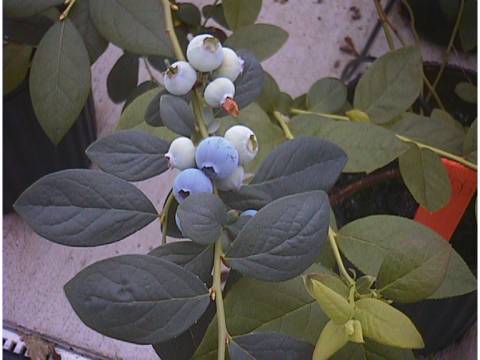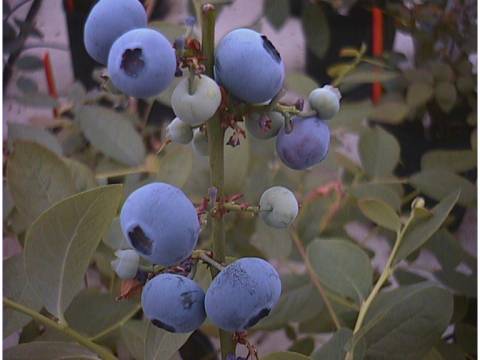Off-Season Production of Blueberries-2002 Report
go.ncsu.edu/readext?454121
en Español / em Português
El inglés es el idioma de control de esta página. En la medida en que haya algún conflicto entre la traducción al inglés y la traducción, el inglés prevalece.
Al hacer clic en el enlace de traducción se activa un servicio de traducción gratuito para convertir la página al español. Al igual que con cualquier traducción por Internet, la conversión no es sensible al contexto y puede que no traduzca el texto en su significado original. NC State Extension no garantiza la exactitud del texto traducido. Por favor, tenga en cuenta que algunas aplicaciones y/o servicios pueden no funcionar como se espera cuando se traducen.
Português
Inglês é o idioma de controle desta página. Na medida que haja algum conflito entre o texto original em Inglês e a tradução, o Inglês prevalece.
Ao clicar no link de tradução, um serviço gratuito de tradução será ativado para converter a página para o Português. Como em qualquer tradução pela internet, a conversão não é sensivel ao contexto e pode não ocorrer a tradução para o significado orginal. O serviço de Extensão da Carolina do Norte (NC State Extension) não garante a exatidão do texto traduzido. Por favor, observe que algumas funções ou serviços podem não funcionar como esperado após a tradução.
English
English is the controlling language of this page. To the extent there is any conflict between the English text and the translation, English controls.
Clicking on the translation link activates a free translation service to convert the page to Spanish. As with any Internet translation, the conversion is not context-sensitive and may not translate the text to its original meaning. NC State Extension does not guarantee the accuracy of the translated text. Please note that some applications and/or services may not function as expected when translated.
Collapse ▲This is a 2002 report from a NC Specialty Crops Program Project. It is posted for historical reference purposes.
Reviewed by Jeanine Davis, NC Alternative Crops & Organics Program, Department of Horticultural Science, NC State University on 10/14/2022.
PROJECT LEADER(S): Gina Fernandez and Jim Ballington
TYPE OF PROJECT: Research
LOCATION: Cunningham Research Station – Kinston, North Carolina
Tidewater Research Station – Plymouth, North Carolina
IMPACT
Greenhouse production of blueberries represents an opportunity for North Carolina growers to participate in a highly profitable off-season market. This project examines the potential of different genotypes for fall fruiting, and the cultural practices necessary to maximize yields in off-season production. Unfortunately, the blueberry cultivars tested were not found to be suitable for this type of production.
INTRODUCTION
There is a highly profitable market for blueberries in the off-season from October through April. Fruit is currently imported into the United States from the southern hemisphere at extremely high prices during this time period. Greenhouse production of blueberries represents an opportunity for North Carolina growers to expand into this time frame.
Normally blueberry plants need to undergo a yearly cycle of summer vegetative growth and flower bud development, winter chilling, followed by flowering and fruiting in spring and early summer. However, unique blueberry genotypes from the breeding programs of North Carolina State University and the University of Florida show promise for production in the off-season. These genotypes have exhibited the ability to flower and fruit in the absence of chilling (no-chill), or with exposure to a reduced chilling period (low-chill). For “no-chill” genotypes, plants are subjected to a slight drought stress, which allows them to produce fruit in the fall shortly after they have set a sufficient number of flower buds during the late summer. “Low-chill” plants have been bred to require a low amount of exposure to temperatures between 35 and 45 °F, and have therefore met their chilling by late December.
The objective of this project was to examine cultural practices necessary for the off-season production of blueberries in North Carolina. Specifically we wished to: 1) Examine the fruiting potential of different genotypes for fall fruiting, and 2) Develop a protocol to maximize yield for off-season production.
RESULTS
Experiment 1: Variety Trial. Three genotypes of blueberries (‘Misty’, NC1849, and ‘Sharpblue’) were grown in pots at the Tidewater Research Station in Plymouth, NC during the summer of 1999. In November, after adequate flower bud set was established, the plants were brought into the greenhouse. A subgroup from each of the three cultivars was subjected to either a 400 hr chilling treatment, a drought stress, or no treatment. Treatment did not have an effect on yield of any of the genotypes. However, the genotypes did vary in their yields (Table 1).
Additional genotypes (NC 2625 and ‘Misty’) were added in the second year. The same treatments were applied: chilling, drought stress and control (no treatment). Plants were transferred from the lathe house or cooler to the greenhouse in December. Harvest began on 3/14 and ended on 4/27. Again there were no differences in yield due to treatment, but there were cultivar differences (Table 1).
Experiment 2: Progeny Screening Trial. 185 plants from a cross between NC1849 and ‘Misty’ were grown in the greenhouses at the Cunningham Research Station. Plants were grown in the greenhouse during the 1999-2000 growing season to stimulate growth. The plants did not produce a crop that year. Yields from individual plants in 2000-1 were very low and many plants died due to disease or nutritional problems. In 2001, only 8 plants with yields of 40 or more grams/plant were identified.
Table 1. Marketable yield (grams/plant) of blueberry cultivars grown in greenhouses in 2000 (Year 1) and 2001 (Year 2).
| Cultivar | Year 1 | Year 2 |
| Misty | 113 | 66 |
| NC1849 | 45 | 27 |
| NC2625 | Not available | 0.2 |
| Star | Not available | 28 |
| Sharpblue | 87 | 34 |
CONCLUSION
Results from studies conducted thus far have not been promising, and the project was discontinued in 2003. Although there was a great amount of interest in this research, the plants did not cooperate. Blueberry plants used in this study are not amenable to production in the greenhouse.
PHOTOS




